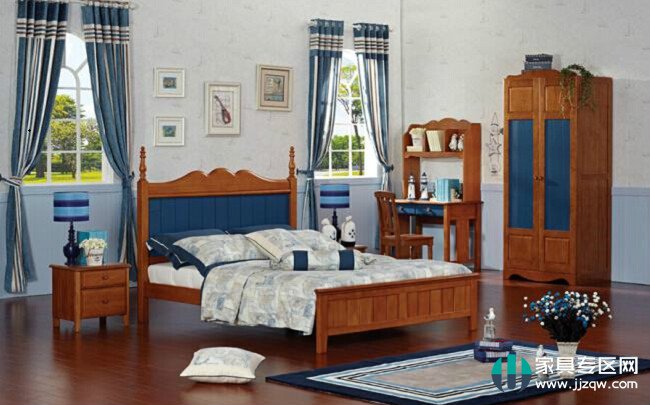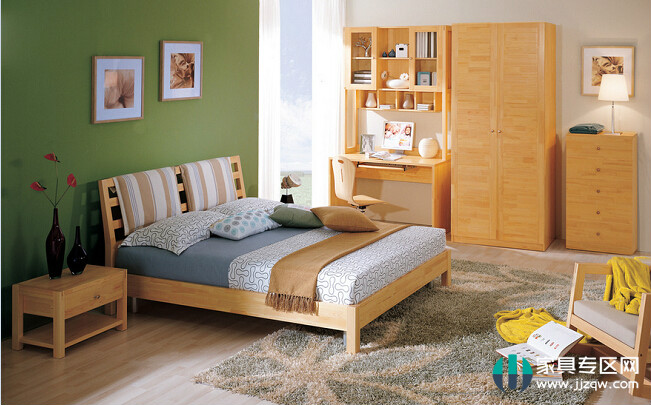
In the 1980s, the Japanese furniture manufacturing industry has gone through the era of imitation and entered the door of innovation. Nowadays, China needs to take the first step of innovation as soon as possible. From the three aspects of materials, structure and equipment, process and process, compare and analyze the difference between foreign furniture manufacturing and learning methods.
In the 1980s, I often went to Japan. At that time, Japan had just got rid of the post-war "cottage era", and all walks of life have reached the door of innovation.
Gu’s boss said that he only made furniture in his life. He is still young! I really only make furniture in my life. I went to Japan to learn about furniture manufacturing and things related to furniture production.
After the war, Japan was a simple and rude imitation. After that, they dismantled the products of advanced countries and thoroughly studied them. This is not the key. They conduct in-depth research on the machines that produce these products, and carry out research and manufacturing.
From the postwar period to the 1980s, the Japanese have completed the use of machine automation to achieve mass production. Chinese products are now facing fierce international trade frictions, and the Japanese have faced them since the 1980s. So they started independent innovation, not just relying on technology introduction.
Also said furniture. The first is the material, our panel furniture, almost all use MDF, particleboard, plywood. These wood-based panels, invented in Europe and America, have been used for hundreds of years, and are used by Japanese people. However, because Japan is in an earthquake-prone area, they use double-packages to reduce the weight of furniture and avoid hurting people, instead of using solid hearts in the West. Wood-based panels.
Then, if you make a double bag, you have to have a wooden frame: the fully automatic nailing equipment, the Japanese have invented their own innovations, the speed is very fast, the furniture is not only light, but the cost is also low. The down processing is trimming, drilling, glue spraying in the hole, upper round bar, an automatic line is completed, and the upper plate is also very simple. Such a worker, driving a forklift, can take care of 8-10 lines.
The characteristics of Japanese equipment: light, power-saving, durable, not as large and power-consuming as European and American equipment. I went to Chengdu to see a large-scale panel furniture factory, and the board used a large suction machine, similar to the copper iron factory. Needless to ask, it is not enough professional supplier Zhang Guan Li Dai.
China is too short of a company that provides professional services to manufacturers. We have reached the door of innovation. We and the Japanese were different at the time. Before the 1980s, the Japanese could introduce only automated machinery, and we have introduced numerical control equipment. After all, the times are different.
However, the most advanced European and American equipment is only bought by Chinese people. So, is it going down? Are we still introducing foreigners after innovation, or are they innovating? We have reached the point where the Japanese were in the 1980s, so they The "science and technology" and "scientific and technological innovation" have not only been done, but also done very well.

1, first say the material
- Foreigners invented medium-density fiberboard, high-density fiberboard, particleboard, blockboard, plywood, and even wet fiberboard. In our farmland, there are more than 6 billion tons of rice straw, wheat straw and other agricultural residues every year. Ten or twenty years ago, our older generation of scholars, including my late teacher, Professor Wang Wei, advocated and participated in the development of straw straw boards and wheat straw boards.
The research and development is successful, but the sales can not be opened. Although the formaldehyde emission is E0, it is difficult to sell because the market turns to solid wood, solid wood and pure solid wood! China is a big agricultural country, and how much of these agricultural residues are used as furniture materials! However, because the sales cannot be opened, the market is small and the cost is also high.
Most rice straw and wheat straw are not burned or buried. Those who advocate solid wood, solid wood, and pure solid wood are mainly media people who are not knowledgeable and well-known. In fact, they are committing crimes.
At the beginning of this year, two Chinese at the University of Maryland, Associate Professor Hu Liangbing from the Department of Materials Science and Professor Li Teng from the Department of Mechanical Engineering made a so-called super-wood, which is actually a wood-modified process that makes wood Can become as hard as steel. Therefore, cork is modified to resemble the hardness of "redwood" such as huanghuali and red sandalwood, even more so. Of course, the wood can be dyed from the inside out as the color of the mahogany.
I don't know if the two professors have joined the US. If not, then this innovation belongs to the Chinese. However, is it useful in China? Don't say that the hardwoods that are handled manually, even the hardwoods that are not in the standard of mahogany, can't be put on the mahogany of "redwood". It is not a valuable hardwood (wood and expensive). Therefore, the two professors' innovative products may be abandoned by the Chinese, just like the fate of rice straw and wheat straw.
Therefore, innovation must have an innovative social soil. China's "hardware conditions" have gradually been reached, but "software conditions" are still far away. Because our farming culture is too long, the concept of agricultural society is deeply rooted in everyone in society, and it is very difficult to change.
According to Malinowski's cultural three-factor theory, social concepts are the most difficult to change. The deep-rooted "dark" guides our lives, reflects in the way of life, and even affects between people. relationship.
2, structure and equipment
The structural design of our panel furniture is based on the 32mm system of the Germans decades ago. Some panel manufacturers boast that they are not only innovative, but also subversive innovations. I don't know what they have subverted? Materials? Structure? Production Process? Program or machine?
How many of our large-scale plate factories are made of domestically produced machinery and equipment? Even simple reciprocating painting lines, the current motor is used in Japan, the core components such as nozzles and pumps, most of which are used in France or Japan. The Chinese imitation of Germany's Venjakab or Italy's Superfici (SCM), Cefla, only engage in cabinets, conveyor belts, conveyor belt cleaning devices, leveling these low-tech packages.
Due to current environmental requirements, the demand for these equipment is large, and the original whole line for buying foreign countries is too expensive, so the demand is greater than the supply. In this way, domestic such machine factories are incapable of cattle. In fact, this is still in the state before Japan in the 1980s. It is the era of what they call "reverse engineering" and has not yet entered the stage of innovation.
Many other large-scale equipments are basically like this. Electronic control and host computers are still foreign, and we only do the matching. The mainframe of production equipment, if we can not manufacture independently, how to enter the innovation? Just like our electronics industry, there is no chip, only the downstream application, that is to build the building on the beach.
3, process and process
Now that the smart technology in Europe, America and Japan (which has done most of China) is enough for our company to develop Industry 4.0 - if the market needs it.
The main six steps of Industry 4.0: Sensors Inputs, Connect, Transfer/Transfer, Data Management, Analysis, and Action/Output.
In the manufacturing process, the sensor collects all relevant materials in a timely manner, and these materials are linked with all production equipment. The data of this whole system, through data management and analysis, makes each link respond differently according to different conditions. This is a self-optimizing system, which is actually the basic content of industrial engineering. Simply put, the so-called Industry 4.0, the current smart technology has been, and the means and tools are also the industrial engineering that has long existed.
So what kind of innovation can we have? Of course, it is possible to innovate in terms of process in response to market demand. But the key is still basic research, machinery and equipment, component parts, electronics and other upstream industries, can lead to real innovation, at least continuous innovation.
2 Tier Dish Drying Rack,2 Tier Kitchen Dish Rack,Two Tier Large Dish Rack,2 Tier Chrome Plated Dish Rack
Jiangmen Xinhui Siqian Xiangyu Metalwork Factory , https://www.xydryingrack.com